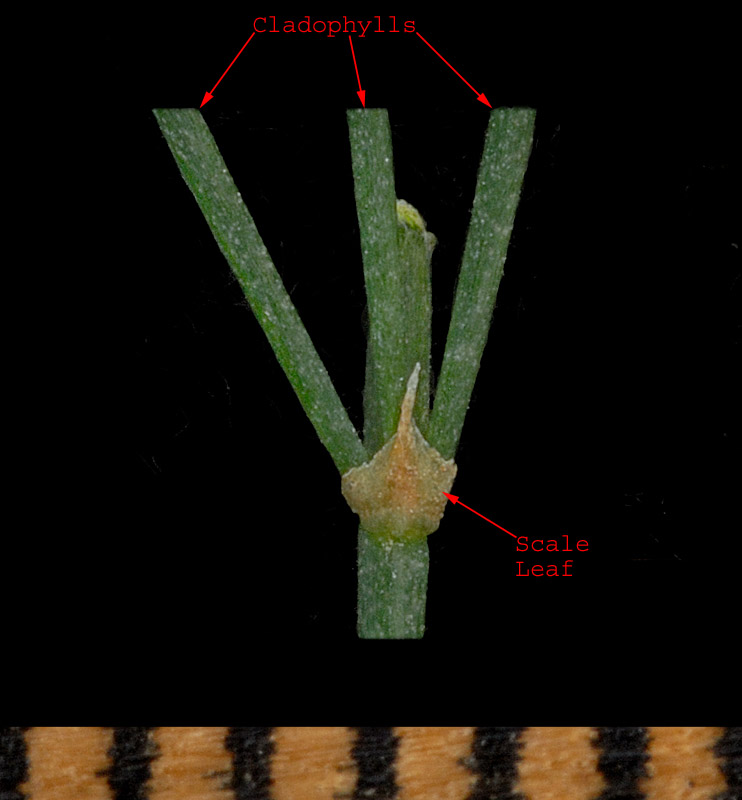 |
Asparagus: Answers to key questions
leading to this genus, from Lilies, Irises & Orchids of Saskatchewan
by Vernon L. Harms and Anna L. Leighton. The answers are in the order
you would normally work through the key.
 |
Flowers axillary, suspended on delicate
stalks from leaf axils, either singly or in few-flowered clusters
(leaves small and scale-like in Asparagus). NOT [Flowers terminal,
either single or grouped in an umbel, raceme or panicle.] |
 |
Flowers 1 per stalk; flower stalk 1-3 per
leaf axil, terete, filiform, jointed or bent at right angle midway along
its length; berries orange to red when mature. NOT [Flowers 2-10
per stalk; flower stalk 1 per leaf axil, flattened toward base, neither
jointed nor angled; berries dark blue when mature.] |
 |
Flower stalks at most 1.2 cm long, +/-
straight with an inconspicuous joint midway along the length; leaves
reduced to 1-2 (3) mm long scales subtending branches and clusters of
1-3 cm long, flattened, thread-like cladophylls. NOT [Flower
stalks 2-5 cm long, bent at right angle with gland at elbow; leaves
ovate to lanceolate, 5-15 cm long.]
|
|

